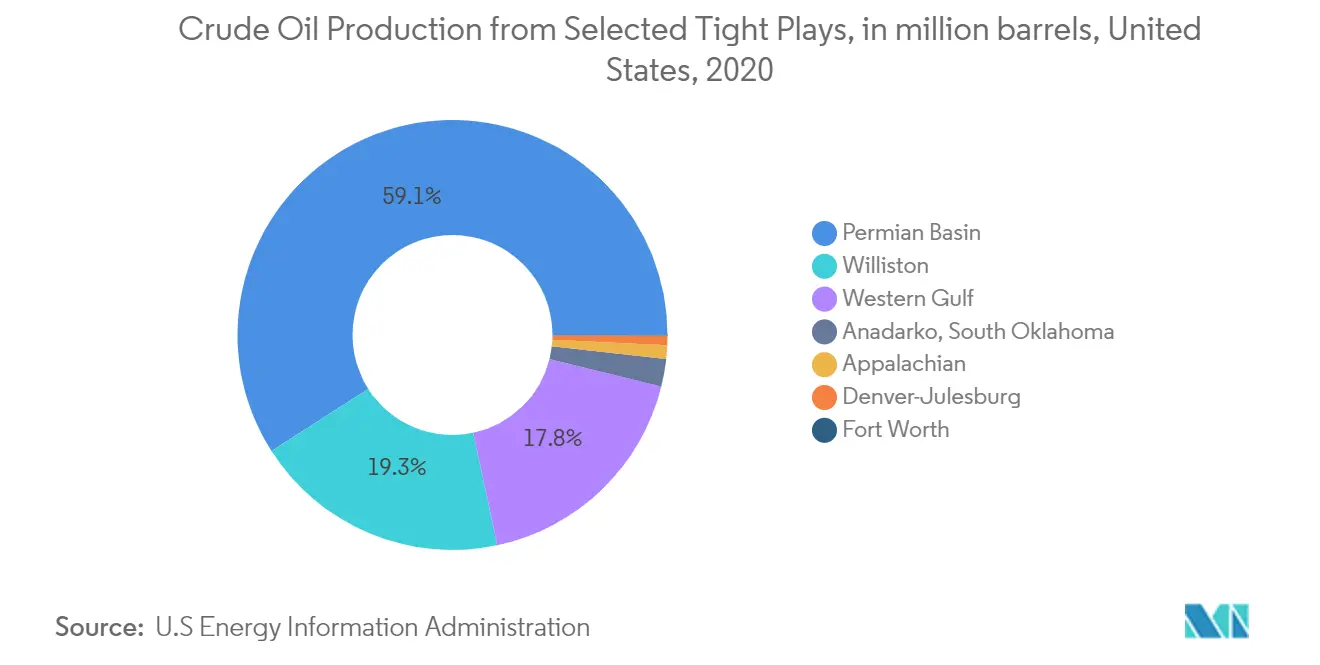Market Trends of North America Fracking Chemicals Industry
This section covers the major market trends shaping the North America Fracking Chemicals Market according to our research experts:
Horizontal or Directional Segment Expected to Dominate the Market
Horizontal drilling is a technique in which drilling is done at an angular direction of at least 80 degrees to the vertical wellbore. The technique involves hydraulic fracturing to extract oil or gas deposits, a process in which fracking fluid is injected at high pressure toward difficult rock formations. The process is generally carried out in the case of unconventional petroleum resources.
The process became a widely used technique, particularly after the US shale gas boom, where hydraulic fracturing was an indispensable part of gas extraction from tight unconventional resources. The shale gas production in the United States reached 26,139 billion cubic feet in 2020, an increase of around 70% in the previous five years.
Furthermore, in 2020, oil and gas producers in New Mexico added more proved reserves, with a capacity of 1.8 Tcf, from the development in the Bone Spring/Wolfcamp shale play in the Delaware Basin in the eastern subdivision of the state. The upcoming production in the reserve during the forecast period is expected to have a direct and overwhelming impact on the market.
The average new well productivity in the Permian Basin (the tight oil play) was around 900 barrels of oil equivalent (BOE) per day in 2020. According to Rystad Energy, this number is expected to increase to 1000 BOE per day by 2022 due to the technical expertise gained by the regional producers in the combination of horizontal drilling and hydraulic fracturing.
Such developments are expected to boost the horizontal well drilling type during the forecast period.

The United States Expected to Dominate the Market
The United States has witnessed huge demand for crude oil and LNG in the last ten years, which has directly influenced petroleum production in the country.
In the United States, tight oil production formed a significant share of the overall crude production in 2020, specifically from prominent unconventional oil and gas players like Eagle Ford, Spraberry, Bakken, Wolfcamp, Woodford, etc. The tight oil plays in the Permian basin held the largest share of production, which was around 1322 million barrels (around 59%) in 2020, followed by the Williston basin.
Furthermore, the US government invested around USD 20 billion annually to the value of new oil and gas projects in the last two decades, which increased the companies' expected profits during the shale booms in the Bakken Formation, Haynesville Shale and Appalachian, Eagle Ford, and Permian Basins. Such initiatives by the government are expected to attract more private investments in the production portfolio.
The Offshore Mad Dog Phase 2 project, located in 4,500 feet of water about 190 miles south of New Orleans, Gulf of Mexico, is also expected to drive the market. It includes a new semi-submersible floating production platform with the capacity to produce up to 140,000 gross barrels of crude oil per day from 14 production wells and inject up to 140,000 barrels of water per day using a LoSal system to enhance oil recovery. The production is expected to start in 2022, with British Petroleum as the operator.
Owing to such developments, the country is expected to hold the lion's share of the market studied over the coming years.


